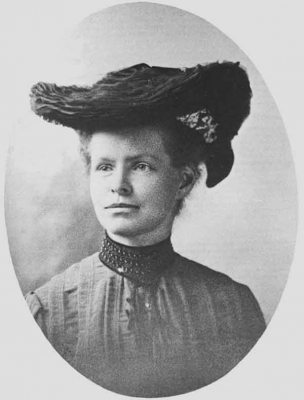
Nettie Stevens was an American geneticist who discovered that sex is determined by chromosome.
Nettie Maria Stevens was born on July 7, 1861, in Cavendish, Vermont. The family moved to Westford, Massachusetts, after her mother’s death. In 1896, she joined the then newly established Stanford University earning her under graduation and post graduation degrees there. She received a Ph.D. in cytology (the study of structure and function of cells) from Bryn Mawr College in 1903. Her Ph.D advisor was the geneticist Thomas Hunt Morgan.
In 1904, Nettie was offered a research assistantship position at Carnegie to investigate the topic of heredity and sex determination. Thanks to Gregor Mendel, by 1900, rules of heredity were known to the scientific community. It was well established by then that parental traits pass to offspring and that the offspring inherits an equal number of chromosomes from each of its parents. But scientists did not know what determined the sex of the offspring.
By studying the cell division in the male common mealworm, Nettie identified a large chromosome and a small chromosome – we now call these X and Y. She concluded that a particular combination of the chromosomes X and Y
was responsible for the determination of the sex of an individual an individual that inherits XX will be female and XY will be male this was evidence that a physical characteristic-in this case the sex of an individual – is linked to differences in chromosomes.
Edmund Beecher Wilson of Columbia University Americas first cell biologist independently made the same discovery as Nettie, later in 1908. Bat Thomas Hint Morgan has been credited with the discovery of sex chromosomes because of his related work on white mutant gene of fruit flies and was even awarded a Nobel Prize in 1933 for the same. Nettie was neither recognized immediately after her discovery, nor invited to speak on theories on sex determination while Morgan and Wilson were. Experts attribute this to gender discrimination Nettie remained an associate in experimental morphology from 1905 until her death in 1912 date to cancer. Nettie Stevens discovered two new species of single-celled organisms: Lionophora macfarlandi and Boveria subcylindrica. She also documented their life cycles.
Picture Credit : Google




